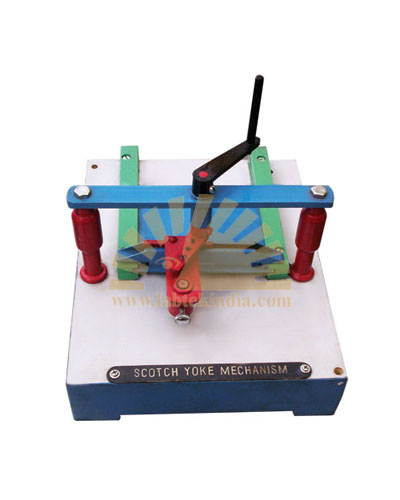- +91-9971077233, +91-9821041467
- labequipments.in@gmail.com
- ENG

The experimental unit is used to generate and investigate pure harmonic reciprocating motion.
An anodised aluminium disc used as crank is mounted on ball bearings on a white plate. This disc has a pointer so that the input angle can be exactly read on the integrated angle measuring scale. The crank pin can be set at different radii on the disc. The slider crank is attached to the crank pin on one side. On the other side the pin is mounted in straight guide that is fitted with a ruler to allow the output stroke to be read off with precision.
The model is equipped with plastic feet and is placed on the laboratory table for the experiment. Two handles make the unit easier to carry.
- conversion of smooth rotary motion into a purely harmonic reciprocating motion
- influence of crank length and input angle on the output stroke